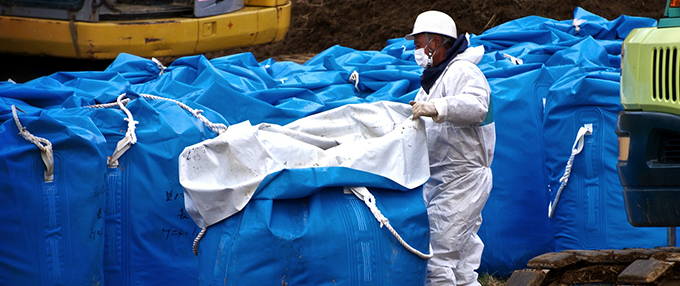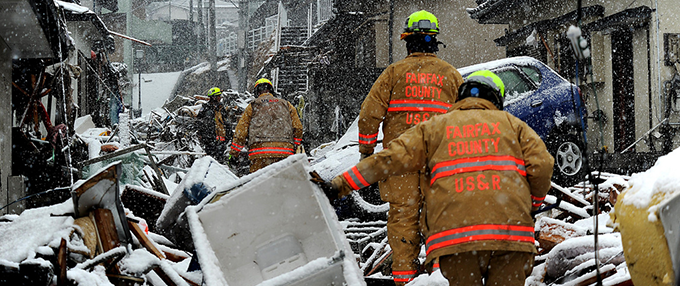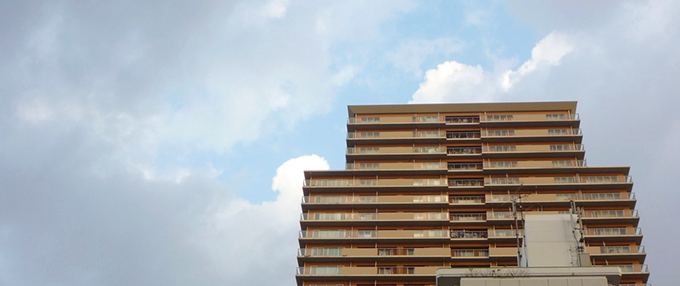JETRO Seminar Highlights Japan's Recovery Five Years After the 2011 Tohoku Earthquake & Tsunami
Apr 26, 2016

April 24, 2016, Chicago, IL – Five years have passed since the devastating Great East Japan Earthquake and Tsunami struck on March 11, 2011. Nearly 16,000 people perished as a direct result, and approximately 2,500 people remain missing.
To commemorate the fifth anniversary of this tragedy, JETRO Chicago hosted a series of business seminars on March 9 and 10 to highlight the recovery of the areas most heavily damaged by the disaster. The seminars were held in the Chicago and St. Paul, Minnesota metropolitan areas. The seminar discussion focused on the Fukushima, Miyagi, and Iwate Prefectures, three coast-adjacent prefectures located in the northern Tohoku region of Japan’s mainland.
These KIZUNA seminars (a Japanese word meaning bond of friendship/emotion) featured three guest speakers who participated in the recovery of the aforementioned regions: Mr. Akihiro Ohyama, Chairman of IRIS USA, Inc., a U.S. subsidiary of a major Japanese houseware supply company that has headquarters and factories in Miyagi Prefecture in Tohoku; Mr. John Olvera, Senior Consulting Engineer at Atkins Nuclear Solutions, which specializes in fire protection systems; and Mr. Yoshiyuki Takasago, Deputy Director-General at the Commerce, Industry and Tourism Department of the Miyagi Prefectural Government. Of the three primary prefectures impacted by the Tohoku earthquake and tsunami (Iwate, Fukushima, and Miyagi), Miyagi was the most affected.
The event’s first speaker, Mr. Ohyama, spoke of the destruction to IRIS facilities and employees:
When the earthquake hit Tohoku, IRIS suffered major damage to its facilities. Ceilings collapsed, merchandise fell from the shelves, and heavy factory machines fell and damaged floors. IRIS’ facilities also lost their basic utilities such as electricity, gas and water. Immediately after the quake, company officials reached out to confirm the safety of all 500 IRIS employees. Thankfully, most were safe. However, three employees who had worked the previous night shift and were asleep in their homes at the time of quake perished.
Despite the devastation and great personal losses (including homes, friends, and relatives), some 388 IRIS employees returned to work three days after the quake. A few had walked nearly two hours to make their regular shift. When asked why they returned, the employees expressed that it was important for them to contribute to the community through their work: many of the supplies produced by IRIS included items such as heaters, facial masks, and evacuation kits, products people desperately needed in the immediate aftermath of the quake.
Thanks to the dedication of the employees, IRIS resumed production a mere eleven days after the quake. As a result of their unusually fast recovery, IRIS was able to give back to the community in more ways than one: the company immediately donated $3 million to the local region to support recovery and also hired high-school graduates from the devastated coastal areas who had lost their jobs and homes as a result of the tsunami.
IRIS also re-evaluated its product line. Immediately after the earthquake, Japan shut down all of its nuclear reactors as a safety precaution. The sudden loss in Japan’s major energy supply source created a massive energy crisis, which sparked a demand for alternative sources of energy. Inspired to solve the problem, IRIS began to develop a line of LED lights that could be utilized by individuals in case of energy problems. The product was well-received, and quickly made IRIS the third-largest supplier of LED lights across Japan.
In addition to new LED light products, IRIS also established a new rice refinery in the Tohoku region to assist local farmers in recovery. The facility features a specialized refining process that helps preserve rice for extensive periods of time. Rice from the refinery has since been exported around the world to Asia and the United States.
IRIS’s recovery and growth thanks to its dedicated employees has helped revitalize the economy in the Tohoku region through jobs and care packages to the surrounding community. Although not every issue remains resolved, IRIS is helping strengthen the local economy one step at a time.

Mr. Ohyama’s speech was followed by Mr. John Olvera’s; the Senior Consulting Engineer spoke of his company’s work with the Fukushima Dai-ichi NPP in coordination with the Tokyo Electric Power Company Ltd. (TEPCO) following the plant’s meltdown.
In the aftermath of the tsunami, TEPCO needed assistance to address the fire hazard concerns created by the power plant’s partial destruction. Any fire in that occurred in the plant following the meltdown could release radioactive contamination, an outcome TEPCO wanted to avoid at all costs. Atkins Nuclear Solutions was hired to develop a new fire protection system that would prevent any future fire-based problems with the plan. As part of its work, Atkins was asked to perform an analysis of the plant, identify potential fire issues, and create an outline for preventing fire hazards in the future. The full fire hazard analysis is expected to be completed by July 2016.
Mr. Olvera noted that the recovery process has been incredible to see. Prior to the accident, Fukushima Dai-ichi NPP was a highly-ordered, well-operated facility; after the tsunami, the entire plant fell into chaos and shambles. In light of where they started five years ago, the progress Mr. Olvera and his Atkins colleagues see today is incredible. Mr. Olvera affirmed it was an honor and privilege to be a part of helping set the plant— and surrounding region— on a brighter path.

The events’ final speech was delivered by Mr. Yoshiyuki Takasago, Deputy Director-General at the Commerce, Industry and Tourism Department of the Miyagi Prefectural Government.
Mr. Yoshiyuki Takasago expressed Miyagi Prefecture’s gratitude to many American friends who helped in the recovery area right after the disaster, such as the United States Armed Forces, who worked incredibly hard on Operation Tomodachi and helped clear mud and debris so that Sendai Airport could reopen. Miyagi remains very grateful for their continuous support.
Mr. Takasago also touched upon the recovery of the region’s infrastructure. Some 95% of roads and bridges have been restored, and the port function has recovered to pre-earthquake levels. In terms of reconstructing communities to prevent another tsunami disaster, he mentioned two methods of protection recently implemented:
In the northern coastal area with mountains, residential areas were relocated from the coast to high-ground, separate from the commercial/industrial area. In the southern coastal area with flat land, residential areas were moved further inland, out of reach of the tsunami, and seaside tsunami prevention measures were taken. These measures included planting forests and farmland near the coast and putting commercial/industrial areas in between the farmland and the residential areas, with high-ground roads and railways to protect against waves.
About 15% of Miyagi’s 2.3 million residents moved to evacuation shelters after the quake and tsunami. Some 47,000 people still live in temporary housing. The prefecture is currently hard at work to build some 15,000 units of public housing for the families who remain displaced. As of March 2016, the project is about halfway finished.
In the last five years, much of Miyagi’s commercial industry has returned in full strength. This growth, combined with Fukushima Prefecture’s commitment to new energy sources (including mega-solar, wind-farm, biomass, and geothermal) are revitalizing the Tohoku region as a place for domestic and foreign investment.

The program closed with thanks to the supporters and an expressed desire for attendees to consider visiting the Tohoku region to see the progress made with their own eyes. The recovery efforts continue, as does Japan’s gratitude for the world’s ongoing support.
The KIZUNA program event was hosted by JETRO Chicago in cooperation with the Consulate General of Japan in Chicago and the local Japan America Societies.
This article was originally published in our Midwest Newsletter for Spring 2016. To read the original piece, please click here.





